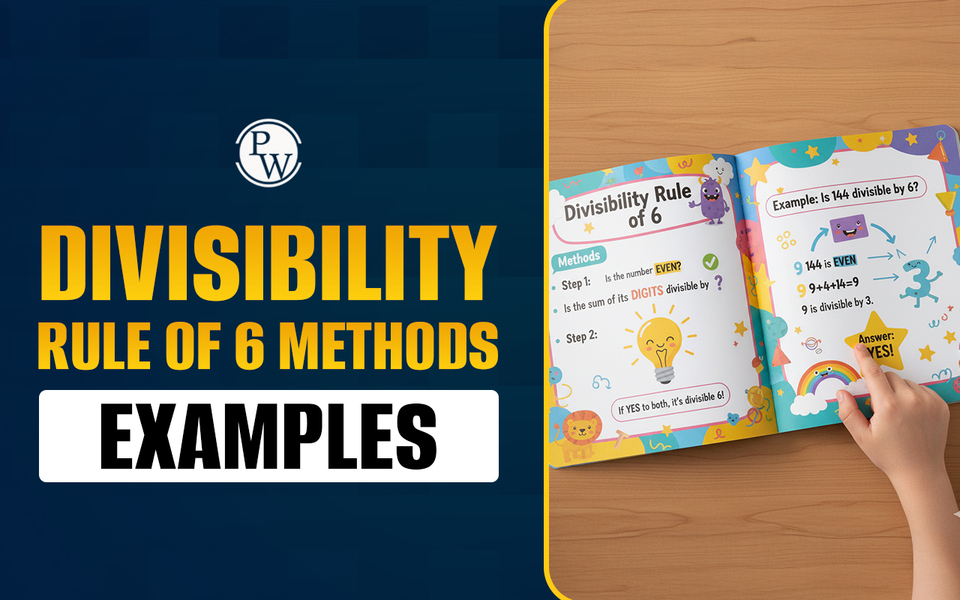
Union Territories of India: India is a vast country divided into different states and union territories. Both are important parts of the country’s administration. However, union territories are different from states in the way they are governed. It is important for us to learn about the union territories of India along with their types and how they are managed in order to understand our country better. Therefore, keep reading to know how many union territories in India exist currently.
Read More: Ocean and Continent Names of the World
What Are Union Territories of India?
Union Territories of India are special areas that are directly managed by the Central Government of India. Unlike states, which have their own governments and chief ministers, union territories do not have full state governments.
Instead, they are looked after by Lieutenant Governors or administrators. These leaders are chosen by the President of India with advice from the Prime Minister. Here are some important features about union territories of India:
-
Central Control: The Central Government makes important decisions for union territories. Some union territories, like Delhi and Puducherry, have their own small assemblies to make certain laws, but most union territories do not.
-
Lieutenant Governor: The Lieutenant Governor is the main leader in a union territory. They represent the President and manage the area.
-
Law Making: Only a few union territories, such as Delhi and Puducherry, have the power to make some laws. Others are fully controlled by their administrators.
-
Financial Aid: The Central Government manages and provides financial aid to the union territories.
-
Courts: The courts from nearby states usually handle legal matters in union territories.
How Many Union Territories Are There in India?
While learning about India, one question often comes to mind: "How many union territories are there in India?" At present, there are 8 union territories in India. Earlier, there were more, but some changes, as explained below, were made by the Government of India in recent years.
-
On 31st October 2019, the state of Jammu and Kashmir was split. It became a union territory, and a new union territory called Ladakh was also created from it.
-
Later, on 26th January 2020, Dadra and Nagar Haveli and Daman and Diu were merged into one single union territory. Before this, they were counted separately.
Because of these changes, there are now 8 UTs instead of 9 union territories of India. These changes were made to make the administration better.
Read More: Difference Between Weather and Climate
8 Union Territories Names With Capitals
As we learned, India has a total of 8 union territories. Each of them is important in its own way. Knowing the names of all UTs along with their capitals helps students understand our country’s administrative divisions better. Find the 8 union territories names with capitals here:
|
8 Union Territories Names With Capital |
|
|---|---|
|
Union Territory |
Capital |
|
Delhi (National Capital Territory) |
New Delhi |
|
Jammu and Kashmir |
Srinagar (summer) / Jammu (winter) |
|
Ladakh |
Leh |
|
Chandigarh |
Chandigarh |
|
Lakshadweep |
Kavaratti |
|
Puducherry |
Puducherry |
|
Andaman and Nicobar Islands |
Port Blair |
|
Dadra and Nagar Haveli and Daman and Diu |
Daman |
These union territories of India are smaller than most states, but they are still important parts of the country. Each union territory has its own features, as outlined below.
Read More: NCERT Solutions for Class 5 EVS Chapter 5 Seeds and Seeds
8 Union Territories of India – Key Features To Remember
Now that we have learned the 8 union territories names, it is also crucial to know more about each one to understand them better. Every union territory of India is unique. Let’s learn important facts about all 8 union territories of India.
1. Dadra and Nagar Haveli and Daman & Diu
This union territory was created on 26th January 2020 by merging two separate territories: Dadra and Nagar Haveli and Daman and Diu.
-
These regions were once ruled by the Portuguese before becoming part of India.
-
The people here speak several languages, such as Gujarati, Marathi, Hindi, Portuguese, Varli, and Konkani.
-
It is located on the western coast of India, near the state of Gujarat..
2. Ladakh
Ladakh became a separate union territory on 31st October 2019 when it was carved out from Jammu and Kashmir.
-
The capital of Ladakh is Leh, which is also the largest town and the second largest is Kargil.
-
The region is known for its high mountains, cold deserts, and beautiful valleys such as Indus, Nubra, and Shyok.
-
It is bordered by Jammu & Kashmir, Himachal Pradesh, and Tibet.
-
Ladakh is home to different religious communities: Muslims (46%), Buddhists (40%), and Hindus (12%).
3. Chandigarh
Chandigarh is not only a union territory but also serves as the shared capital of Punjab and Haryana. It was founded on 1 November 1966.
-
It is one of the best-planned cities in India and was designed by Le Corbusier, a famous Swiss-French architect.
-
While the official language here is English, people generally speak Hindi and Punjabi.
-
It is often called “Pensioner’s Paradise” because of its calm and quiet lifestyle.
-
The Capitol Complex in Chandigarh was declared a World Heritage Site by UNESCO in 2016.
4. Delhi
Delhi became a union territory in 1956. It is also the capital city of India that is situated on the banks of the Yamuna River and is surrounded by Uttar Pradesh and Haryana.
-
New Delhi serves as the seat of the Indian government.
-
Delhi is full of historical monuments, including Red Fort, Qutub Minar, and Humayun’s Tomb — many of which are UNESCO World Heritage Sites.
-
Delhi has hosted many international events like the Commonwealth Games, Cricket World Cup, and Asian Games.
5. Puducherry
Puducherry, earlier called Pondicherry, became a union territory of India on 1 November 1954 and is known for its French colonial past.
-
Puducherry is made up of four small parts: Puducherry and Karaikal (near Tamil Nadu), Mahe (near Kerala), and Yanam (near Andhra Pradesh). Though they are far from each other, together they form one union territory.
-
The main languages spoken are Tamil, Telugu, Malayalam, and Urdu.
-
Puducherry is famous for its French-style streets, churches, beaches, parks, and temples.
6. Jammu & Kashmir
Jammu and Kashmir became a union territory on 31st October 2019, and Ladakh was separated from it to become its own union territory.
-
Srinagar is the summer capital, and Jammu is the winter capital of this region.
-
The territory is popular for its natural beauty, especially Dal Lake, Gulmarg, Pahalgam, and snow-covered mountains.
-
The literacy rate here is around 67.16%.
-
Important languages include Hindi, English, Dogri, and Kashmiri.
-
The economy mostly depends on agriculture, especially the production of apples, saffron, walnuts, and cherries.
-
The Kishtwar region is also known as the “land of sapphire and saffron” due to the high quality of both products found here.
7. Lakshadweep
Lakshadweep is a group of 36 small islands located in the Arabian Sea. It was declared a union territory on 1st November 1956. The name ‘Lakshadweep’ means ‘a hundred thousand islands’ in both Sanskrit and Malayalam.
-
It is the smallest union territory in terms of area and population.
-
These islands are located about 220 to 440 km away from the city of Kochi.
-
Lakshadweep is known for its white sandy beaches, clear blue waters, and coral reefs.
8. Andaman and Nicobar Islands
The Andaman and Nicobar Islands are a group of many islands located in the Bay of Bengal. It became a union territory in November 1956.
-
The capital city is Port Blair.
-
This union territory has 38 inhabited islands and a total area of 8,249 sq. km.
-
It lies close to countries like Thailand and Myanmar, separated by the Andaman Sea.
-
These islands are covered with dense forests, rich wildlife, and beautiful beaches.
-
One of the most special facts is that it is home to the Sentinelese tribe, a group of people who live without contact with the outside world.
-
The region is also known for its cellular jail, a reminder of India’s freedom struggle.
Read More: Water Cycle for Class 4
Why Are Union Territories of India Formed?
Union Territories play a special role in India's system of governance. They are different from states because they are directly managed by the Central Government. But why do we need union territories at all? Here are some key reasons that explain why they are formed:
-
Small Size and Unique Identity: Some regions were either too small or culturally different from nearby states. Making them union territories helped in protecting their unique identity and allowed better administration.
-
Special Historical Background: Places like Puducherry and Daman & Diu were once ruled by European countries like the French and Portuguese. Because of their unique past, they were given the status of union territories to respect their different cultural background.
-
Strategic Location: Islands like Lakshadweep in the Arabian Sea and Andaman & Nicobar in the Bay of Bengal are far from mainland India. Their locations are important for the country’s safety and sea routes. That’s why the Central Government takes care of them directly.
-
National Importance: Some union territories are very important for the whole country. For example:
-
Delhi is the capital of India and the center of all national government work.
-
Chandigarh is the capital city of both Punjab and Haryana, so it is managed by the Union Government to keep things fair.
Give Your Child a Boost with CuriousJr’s 6 Days Online Tuition Classes
Is your child struggling to keep up in class even after regular school learning? Many children find it hard to understand subjects like Social Studies, Maths, Science, and English through classroom teaching alone, which can be the reason behind their low confidence and weak marks.
CuriousJr’s Booster 6 Days Online Tuition Classes are designed to give your child that extra push they need.
-
Each class is interactive and guided by dedicated mentors who focus on concept clarity and personalized support.
-
The two-teacher model makes sure that your child gets both attention and guidance.
-
Daily homework help and doubt-solving sessions keep learning consistent.
-
Regular Parent-Teacher Meetings keep you updated on your child’s progress.
Book a demo class today and see how CuriousJr can help your child strengthen their understanding of important topics in just 6 days.
Union Territories of India FAQs
How many union territories are there in India?
What are the 9 union territories of India?
Why are union territories important?
Which union territory is the capital of India?









